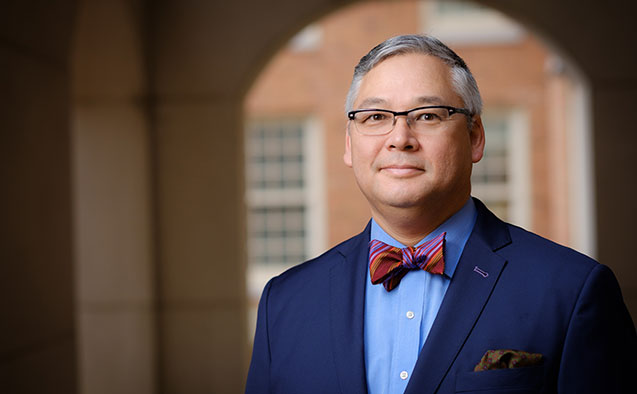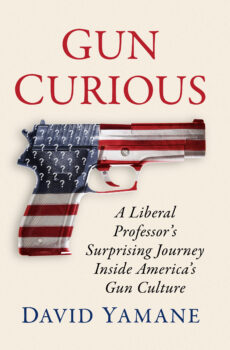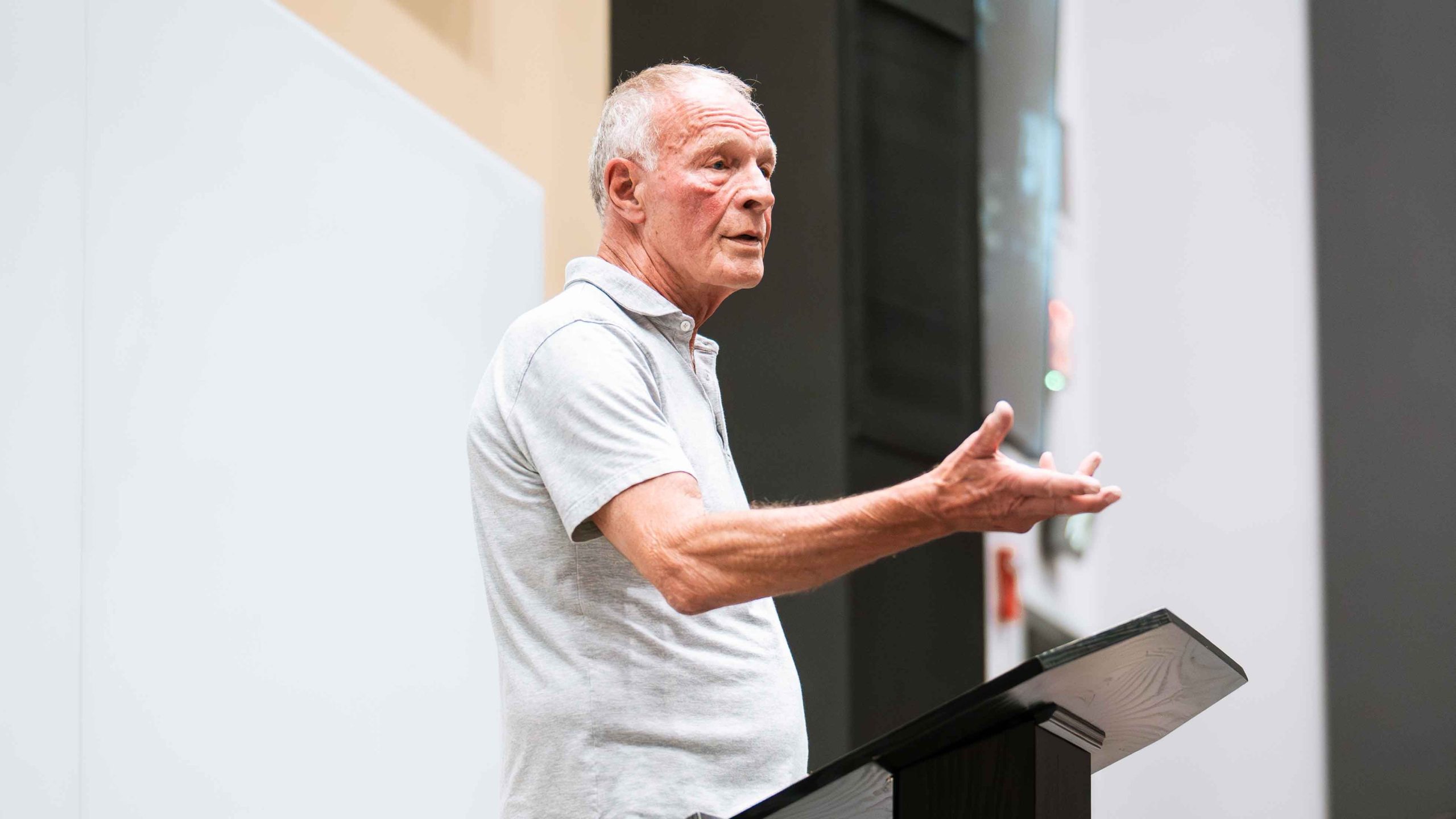Unpacking gun culture in America
Who owns guns and why

In a Pew Research Center survey conducted in 2023, 72% of U.S. gun owners say protection is a major reason they own a gun. That far surpasses the number of gun owners who cite other reasons including hunting and sport shooting.
Wake Forest University Professor of Sociology David Yamane, an internationally recognized authority on gun ownership in the United States, offers insights about the nearly 100 million American civilians who own firearms.
 His most recent book, “Gun Curious” will be released June 1. Other works include: “Concealed Carry Revolution: Liberalizing the Right to Bear Arms in America,” and the Gun Culture 2.0 blog.
His most recent book, “Gun Curious” will be released June 1. Other works include: “Concealed Carry Revolution: Liberalizing the Right to Bear Arms in America,” and the Gun Culture 2.0 blog.
How did guns become such an important part of American culture?
In the early history of the American nation, when the first colonists arrived at Jamestown in 1607 and Plymouth Rock in 1620, firearms were practical tools. But as the U.S. developed, so too did American gun culture.
In the middle of the 19th century, gun culture took on new emphases, notably hunting as a sport, formalized recreational shooting, and various types of gun collecting. Hunting, target shooting, and collecting continue to be vital aspects of U.S. gun culture today.
In the 20th century, gun culture shifted from recreational and leisure pastimes to armed self-defense. The social unrest and global uncertainty of the 1960s and 1970s planted the seeds for another shift in gun culture. These seeds sprouted in the 1980s and 1990s with the concealed carry revolution and have been blooming ever since.
Today, self-defense is the core of American gun culture, even as that culture remains diverse in terms of what people do with and how people think about their firearms.
Who owns guns in the U.S.?
The statistically average gun owner in America has long been seen as a politically and religiously conservative, middle-aged, heterosexual, white cisgender man from the rural South. The problem with averages, though, is that they mask underlying complexity. Gun owners have always been diverse in the United States, with strong traditions of female and Black gun ownership. Gun owners are also politically and religiously diverse. The relationship between gun ownership and religious belief, belonging, and behavior defies simple description.
Above and beyond diversity among gun owners and the reasons for owning guns, it is important to recognize that guns and gun ownership are common, widespread, and not inherently associated with deviance or abnormalities.
According to Pew Research Center data, a majority of the population currently lives with a gun in their house or has in the past (66%). Just one-third of adults in the U.S. do not own a gun and cannot see themselves owning one in the future.
Political divisions over firearms notwithstanding, guns are normal for a majority of Americans.
Is gun ownership growing?
There has been an uptick in the number of new gun owners in recent years. By one account, 7.5 million American adults became new gun owners between January 2019 and April 2021.
Many different kinds of people will respond to a universal concern for safety by purchasing firearms. This was nowhere more evident than during the Great Gun Buying Spree of 2020. Amid social uncertainty and social unrest, it makes sense that a broad swath of the American population would respond by buying guns, including many new gun owners from non-traditional backgrounds. Many of these new gun buyers were already considering gun ownership and motivated by circumstances to get off the fence.
Compared to existing gun owners, new gun owners tend to be younger, more female, more Black and Hispanic, more urban, more likely to have children, and less likely to have ever been married. These new gun owners represent an important part of the future of American gun culture.
Why is it so difficult to reduce gun violence, including mass shootings, in the U.S.?
There are two challenges in addressing gun violence. First, gun violence is what social scientists call a “wicked problem.” It is a problem that resists simple solutions, and solutions applied often have unintended consequences. There are no easy or, even worse, “common sense” solutions to gun violence.
Second, gun violence is not one thing but many, so is easily misunderstood. Are we talking about criminal homicide and gun injury? Are we talking about suicides? Do we consider accidental injuries and deaths to be gun violence? Are mass shootings properly understood as gun violence or are they acts of terrorism? Different kinds of injury, death and terrorism committed with firearms require different approaches to reduce them.
Gun violence, like all human violence, is socially organized. Homicide, for example, is a health disparity; it is extremely concentrated demographically and geographically in the U.S. Even within neighborhoods, crime runs through particular social networks and concentrates on particular city blocks.
A concentrated problem requires focused responses that address economic and social challenges. Here are two examples.
- CeaseFire programs. These programs target high-risk individuals with swift, severe, and certain punishment, but also offer social services as alternatives to engaging in violent behavior (e.g., job training, mentoring, anger management). They also harness community leaders, such as clergy, to act as a moral voice to dissuade negative and encourage positive behavior.
- Violence interruption programs. These treat violence as a contagious disease that is passed from person to person through networks and seek to disrupt the disease cycle by breaking the links. For example, hospital-based violence intervention programs use credible messengers to intervene with individuals who are hospitalized due to gun violence. They address the trauma of violence and its structural underpinnings by providing social services like mental health counseling, legal assistance, mentoring, job placement, educational opportunities, and housing assistance to “inoculate” victim offenders from future violence.
For suicide and mass shootings the underlying point is the same. These are complex problems that defy simple solutions. But there are ways to address them. Unfortunately, reducing these negative outcomes with firearms requires incremental approaches that don’t win political points and require considerable social investments that we, as a society, are not yet willing to make.
How can we bridge the divide when discussing guns?
Guns have become a political wedge issue that impedes progress toward recognizing gun owner rights and simultaneously seeking to reduce negative outcomes with guns.
However, we can lower the heat. The keys to having better conversations are to seek commonalities, embrace empathy and see people as fellow citizens. One of the beauties and challenges of living in a pluralistic democracy of more than 300 million diverse citizens is learning to disagree respectfully.
Will guns be a significant issue in the upcoming election?
The 2024 presidential race will be decided by a very small number of people – mostly suburban white women – in swing states. Guns are unlikely to be a decisive issue for this group in whether to vote for Trump or Biden in comparison to issues like the economy, immigration and reproductive rights.
Categories: Experts, Research & Discovery
Wake Forest News
336.758.5237
media@wfu.edu
Meet the News Team
Wake Forest in the News
Wake Forest regularly appears in media outlets around the world.




